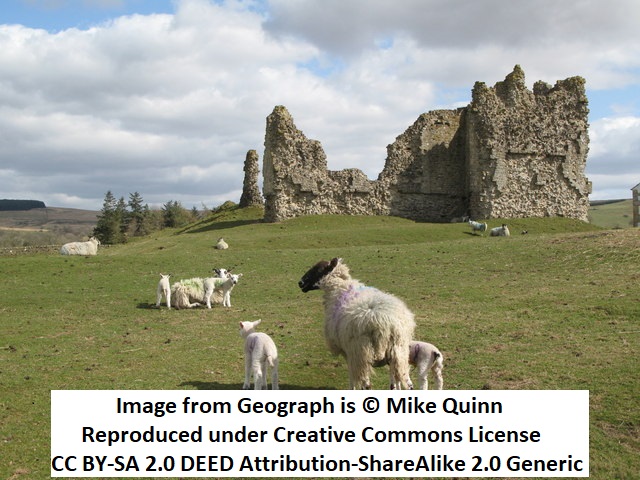Bewcastle Castle

Bewcastle Castle Details
Bewcastle is a modest rectangular courtyard acting as a shell keep, within the earthworks of a Roman fort and upon the site of an eariler timber castle. It was repeatedly decaying and repaired until the 16th century, and last garrisonned in 1639.
- Access: Free Public Access
- Grid Reference: NY566747
Bewcastle Castle is the substantial stone ruin of a small 14th century courtyard castle, a rectangular shell-keep, really, upon the site of an earth and timber castle of the 11th and 12th century – itself built within the earthworks of a Roman fort. It is clearly visible from public roads, and there is public access through a signed gateway.
The Roman fort was a six-sided fort acting as an advance outpost for Hadrian’s Wall, with earth and timber walls, but stone gatehouses and interior buildings, which provided a good source of building materials after it was abandoned c343 AD. During the late 11th century, King William II of England elected to annex the north-west of England, which had been under the control of the Kings of Scots, and some sources suggest that it was at this point that the square ditch and bank was erected to provide a military base in the area. However, it is also possible that it dates to a later period, perhaps to the mid 12th century. Either way, it seems to have been sacked during the rebellion of the Young King against Henry II, when King William of Scots supported the rebels. At the time the lord was Robert de Vaux, who commanded at Carlisle, but the castle was taken from him the following year. It remained in royal hands until 1271, when it was purchased by the sheriff of Cumberland, and then was held by Adam de Swinburne until 1327.
The site was not really brought back into use until the 14th century, when the Roman masonry was used to create a squarish building some 27 metres across with a forebuilding on the west side, with buildings around the north, east and south walls – and the ditch was recut. This stone castle was erected by John de Strivelyn (Stirling), a commander of King Edward III, (he was constable of Edinburh Castle at one point) and completed about 1360. It remained in use throughout the 14th and 15th century, eventually finding its way into the hands of Richard Duke of Gloucester in 1478, later King Richard III. Richard repaired the castle and added the forebuilding to the entrance, but after his death the castle fell into disuse again, until granted to the Musgrave family, who had held senior positions in Cumberland for some time. They carried out repairs and rebuilding works in 1527 and 1533, but by 1565 the place was ruined, and further repairs were not authorised. In 1639 a small garrison was sent in response to disturbances north of the border, after which the place was dismantled, the garrison moving to Carlisle.
Become a supporter of my work to access a more detailed history